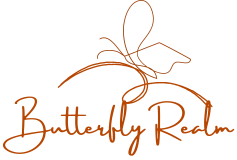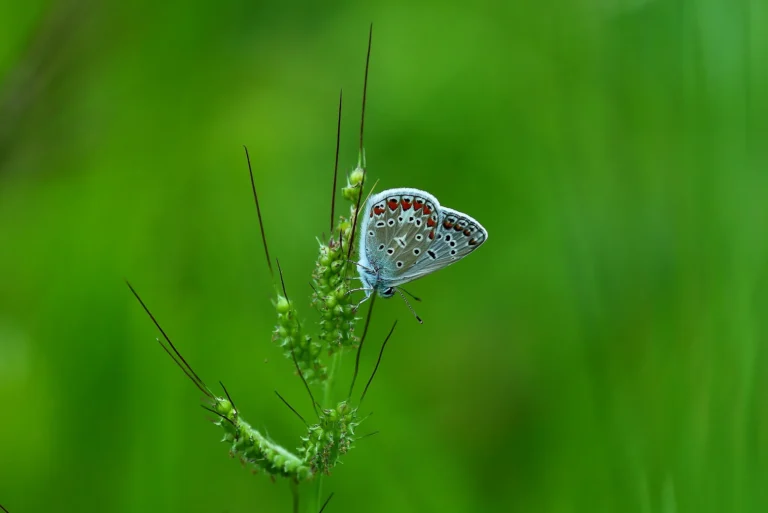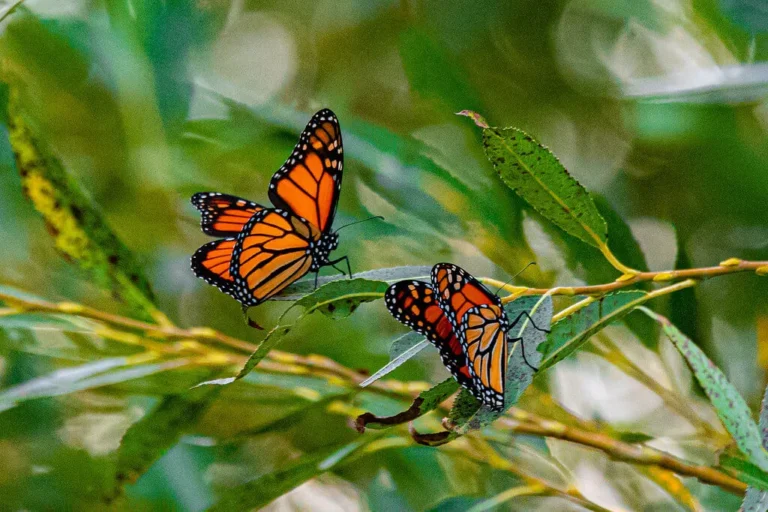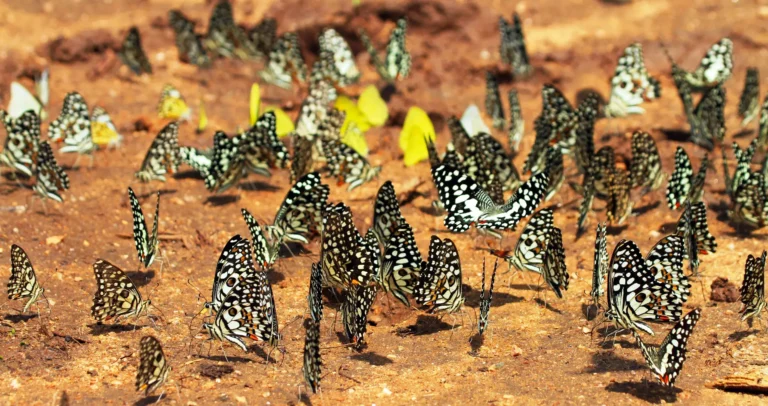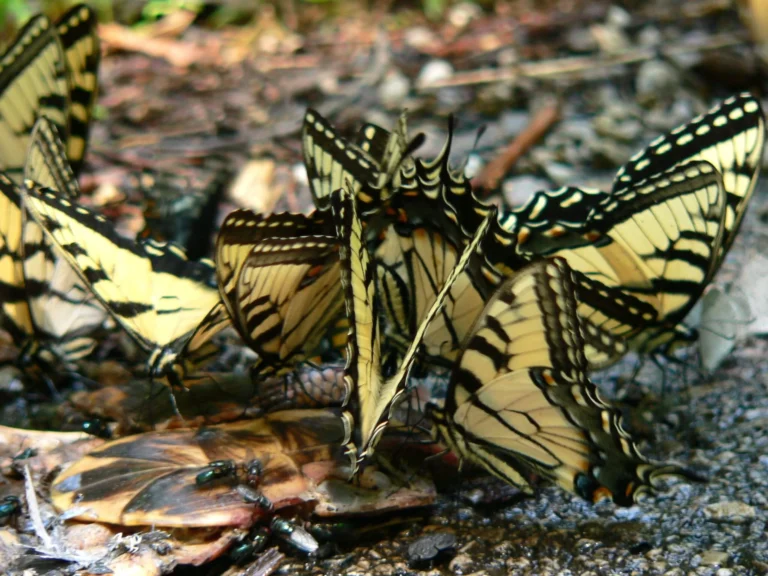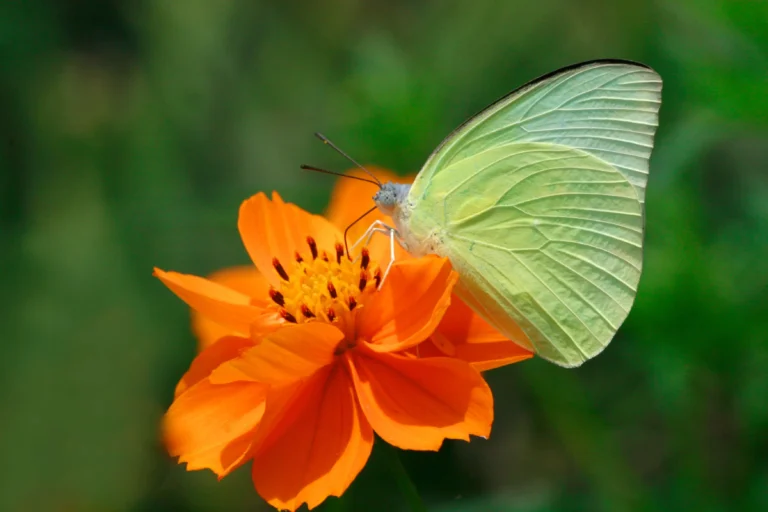Painted Jezebel Butterfly Guide: Lifecycle, Habitat & FAQs
Quick Summary: The Painted Jezebel is a colorful butterfly with a wingspan of 6 to 8 centimeters. Its wings are yellow and white with black and red edges. It’s mostly found in Asia and loves living in Singapore’s green spaces. The butterfly lays its eggs on mistletoe leaves, and the caterpillars feed on these leaves too. As adults, they feed on flower nectar. They are not dangerous and play a role in pollination. They live for about one to two months and are not currently endangered.

Table of Contents
Introduction
Do you love butterflies? If you do, then you have to know about the Painted Jezebel, one of the most stunning butterflies you’ll ever see. This butterfly is not like any other. It has amazing colors and plays a big role in nature.
In this article, we will tell you everything you need to know about this fascinating creature. From how it looks to where it lives, and even its role in nature, we’ve got it all covered!
Physical Characteristics

Size and Dimensions
The Painted Jezebel is a medium-sized butterfly, but it’s not the largest one you’ll encounter, like the Luna Moth for example. It has a wingspan that measures between 6 to 8 centimeters. Learn more about Luna Moth eggs and size.
Though it may not be the largest butterfly you’ll encounter, it has a presence that captures attention, making its moderate size perfect for the brilliant display of colors on its wings.
Wing Pattern and Color
The first thing that you’ll notice about this butterfly is its striking appearance. Its wings are a captivating mix of bright yellow and crisp white, bordered with patches of dark black and vivid red. This combination of colors not only makes it easy to spot but also adds to its unique allure. Nature enthusiasts and photographers often find it one of the most rewarding subjects to observe and capture.
Body Structure
The Painted Jezebel has a slender, streamlined body designed for efficient flying. Its well-proportioned physique allows for excellent maneuverability in the air. The butterfly can easily zip from one flower to another and navigate through branches and leaves, all while maintaining its graceful composure.
Introduction to the Lifecycle
Understanding the lifecycle of the Painted Jezebel offers a more in-depth appreciation of this wonderful creature. From the initial egg stage to its full transformation into an adult, each step is a testament to the marvels of nature.
It’s somewhat similar yet unique when compared to other butterflies like the Monarch. Explore the Monarch Butterfly’s lifespan.
Egg Stage
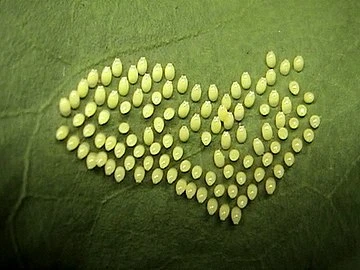
How and Where the Eggs Are Laid
The Painted Jezebel is quite choosy when it comes to laying its eggs. The mother butterfly commonly selects the leaves of the mistletoe plant, a common plant in Singapore, as the perfect place for her offspring. She adheres her eggs to the underside of the leaves, ensuring they are safely tucked away from immediate danger.
Shape and Size of the Eggs
Each egg of the Painted Jezebel is a tiny masterpiece, not dissimilar in fascination to Monarch butterfly eggs. Discover what Monarch Butterfly eggs look like.
Shaped somewhat like a small vase or a miniature jar, the eggs measure about 1.2 to 1.3 mm in height. For something so small, the detail is fascinating.
Color Transformation During the Egg Stage
Initially, these eggs exhibit a pale yellow hue, which slowly turns to a lighter, almost whitish color as they mature. This color change is a subtle but sure sign that the eggs are nearing the hatching stage.
Duration for Hatching
After about 4 to 5 days of careful development, the eggs are ready to hatch. It’s a period of waiting, but what comes out is worth the wait.
Specific Features
One unique feature of the Painted Jezebel’s egg is a slightly raised rim around the top. This is often called the micropylar, a small but significant part of the egg that plays a role in its development.
Hatching
Description of the Hatching Process
Once the 4 to 5 days are up, the eggs start the hatching process. The baby caterpillar inside starts to nibble away at the eggshell. It eats just enough of the shell to make a hole big enough to come out. It’s a delicate process, showing how life fights its way into the world right from the start.
What the Newly Hatched Caterpillar Looks Like
When the caterpillar first comes out, it is tiny, measuring just around 2.2 mm. Its head is black, making a stark contrast to its pale yellow body. The body is cylindrical in shape and has soft, fine hairs, or setae, along its back and sides.
Behavior Right After Hatching
After hatching, the young caterpillar gets straight to eating. But it doesn’t eat the rest of its eggshell. Instead, it starts feeding on the leaf where it was born. This creates small holes in the leaf, a clear sign that a new Painted Jezebel is beginning its life.
Early Caterpillar Stage

Changes in Body Color as Growth Progresses
In the early days of its life, the caterpillar starts to change color. As it eats and grows, its body turns from pale yellow to yellowish-green. This change helps it blend in with the leaves, making it harder for predators to spot it.
Feeding Habits and Host Plants
The caterpillar loves to eat the leaves of the mistletoe plant, just as Monarch caterpillars have their preferred milkweed. Understand the dietary differences between male and female Monarch butterflies.
In Singapore, one common type of mistletoe plant they like is Dendrophthoe pentandra. They usually eat in groups, and they prefer the young leaves, which are easier to chew and digest.
Physical Changes Like Body Length
As the caterpillar keeps eating, it also grows longer. Within about 2.5 to 3 days, its body length doubles to about 4 mm. It’s a quick growth spurt, fueled by all the leaf munching it does.
Mid Caterpillar Stage
Further Development in Color and Size
As days pass, the caterpillar enters its mid-stage and undergoes more changes. Its body color turns to a deeper shade of green, and it grows even longer, up to about 7 mm. It’s getting ready for the next big change in its life.
New Features
Around this time, you can see new features like tiny bumps or tubercles on its body. These tubercles have long, fine white hairs coming out of them. These hairs are not just for show; they help the caterpillar sense its environment.
Feeding Behavior and Its Impact on the Host Plant
During this stage, the caterpillar’s appetite grows. It eats more and more leaves, causing noticeable damage to the host plant. However, this is part of nature’s cycle, and the plant usually survives and continues to grow.
Late Caterpillar Stage
Preparations for Pupation
As the caterpillar approaches the late stage of its development, something incredible happens. It starts to prepare for the pupation process. This means the caterpillar will stop eating and start looking for a safe place to hang from, often the underside of a leaf or a twig.
Final Size and Coloration Before Transitioning
By the end of this stage, the caterpillar grows up to its final size, which can be up to 10 mm long. Its body color may turn to a more subdued shade of green, a sort of last salute before its grand transformation. The color helps it blend into its surroundings, offering protection from predators during the vulnerable stages that follow.
Pupal Stage
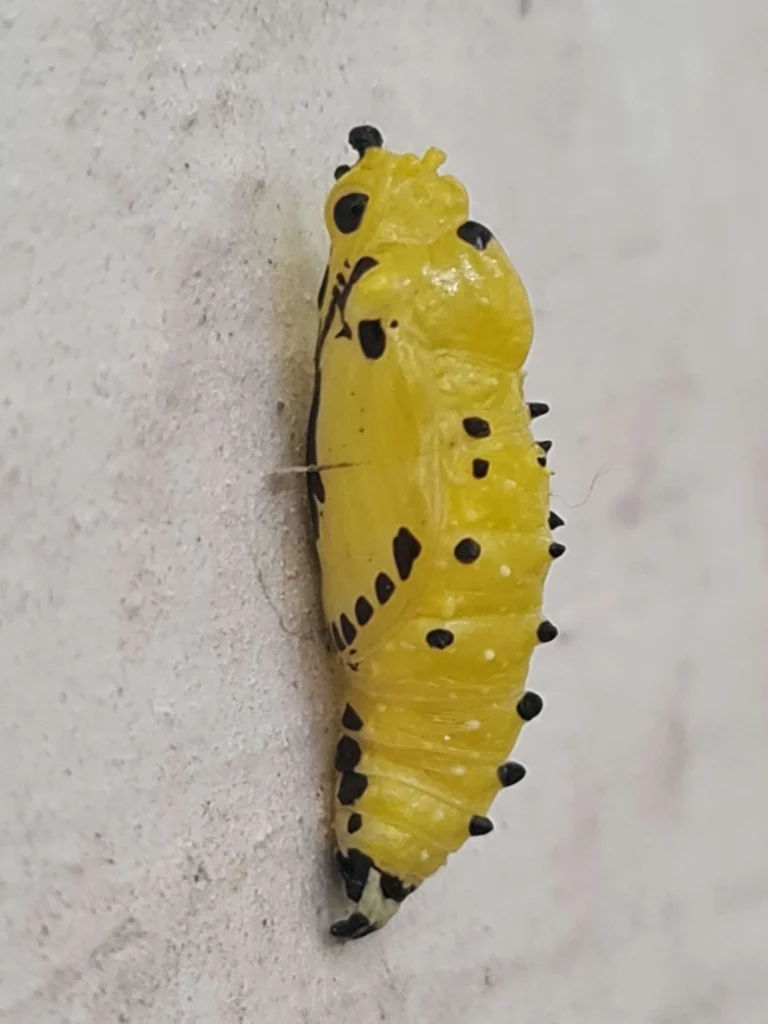
Description of the Pupa’s Appearance
After finding a secure spot, the caterpillar transforms into a pupa. This pupa looks like a small, wrapped bundle. It can be green or brown, further helping it blend into the natural scenery. During this stage, it might appear lifeless, but inside, a lot of changes are happening.
Duration of this Stage
The pupal stage lasts about 10 to 14 days. It’s like a short rest for the Painted Jezebel, but a lot is going on inside. It’s getting ready to become a butterfly!
Any Notable Features Unique to the Painted Jezebel
What sets the Painted Jezebel’s pupa apart are subtle markings that hint at the vibrant colors it will soon display. It’s a preview of the beauty that’s about to unfold.
Adult Stage
The transformation from Pupa to Adult
After days of waiting and internal rearrangement, the adult Painted Jezebel finally emerges from the pupa. This moment is called eclosion. As it breaks free, it unfolds its wings for the first time, revealing the magnificent colors that make it so special.
First Flight
The newly emerged adult spends some time resting and letting its wings dry. After a few hours, it takes its first flight. It’s a tentative flutter at first, but soon it gains confidence and starts to fly more freely, ready to explore its world.
Mating and the Cycle Repeats
The adult Painted Jezebel then seeks a mate to start the lifecycle anew. Once mating occurs, the female starts laying eggs on the mistletoe plants, and the wonderful cycle of life continues for the next generation.
So, there you have it—a detailed look into the various stages of the Painted Jezebel’s lifecycle. The journey from a tiny egg to a vibrant butterfly is a fascinating tale of growth, change, and the will to survive.
Habitat
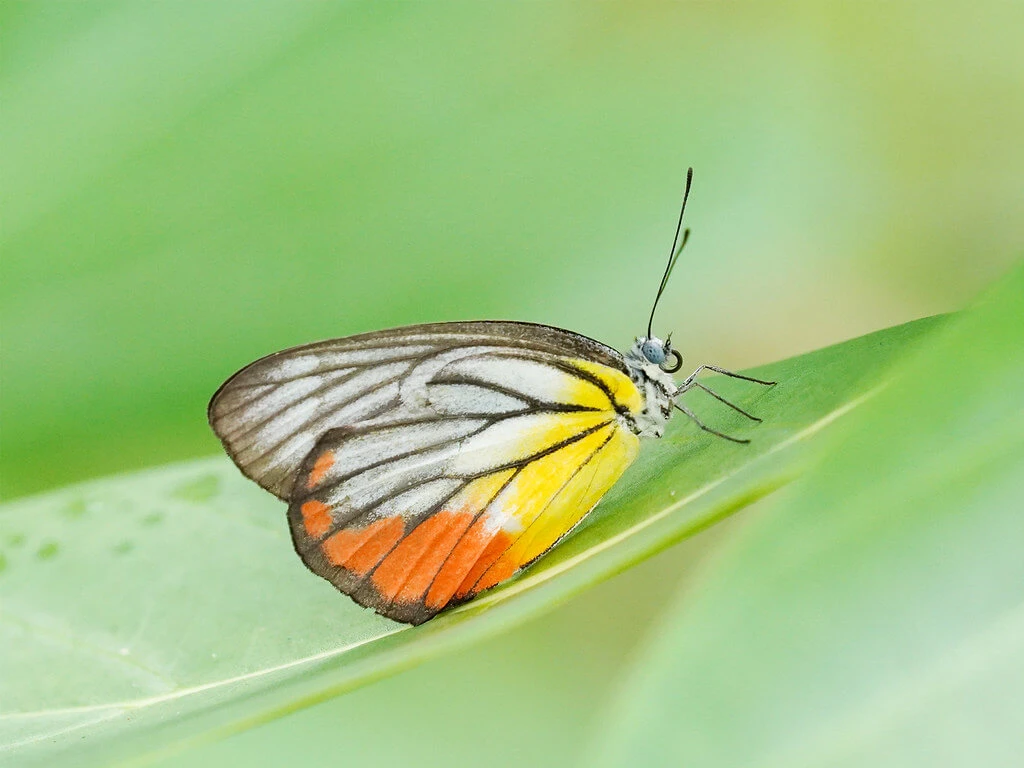
The Painted Jezebel in Singapore
The Painted Jezebel can be found in several parts of Asia, but it has a special relationship with Singapore. In Singapore, this butterfly is not rare, which gives locals and tourists alike an excellent opportunity to witness its beauty.
The Butterflies Of Singapore
Singapore, with its rich biodiversity and green spaces, provides an ideal setting for the Painted Jezebel. Here, it enjoys the tropical climate and the abundance of its preferred host plants, like the mistletoe.
Preferred Environment
The Painted Jezebel loves wooded areas, gardens, and even urban parks. Any place with plenty of flowers and trees is a good home for this butterfly.
Migratory Patterns
While some butterflies are known for their long migrations, the Painted Jezebel usually stays put. It’s a local resident, living its entire life in a relatively small area.
Behavior and Ecology
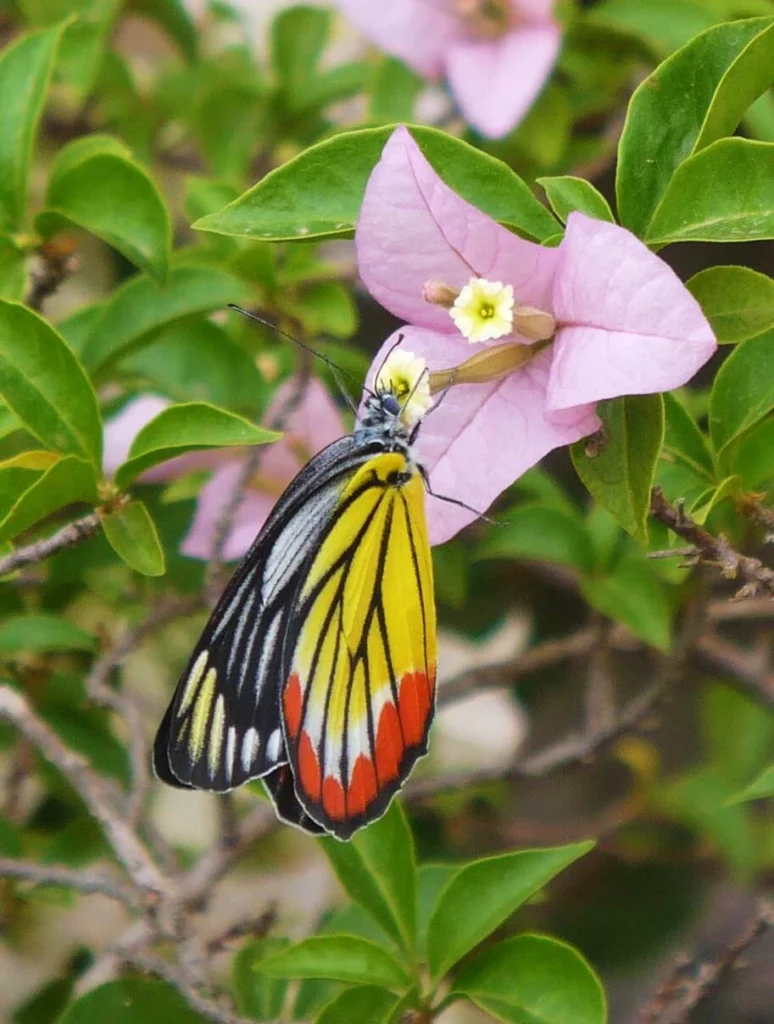
Feeding Habits
Adult Painted Jezebels mostly feed on nectar. They love flowers and can often be seen fluttering from one bloom to another. Their feeding helps in pollination, making them essential players in the ecosystem.
Mating Rituals
Mating is a straightforward affair for these butterflies. The male usually approaches the female during flight and they mate shortly afterward. There’s no elaborate dance or display, but it’s a crucial step for the continuation of the species.
Predators and Threats
Birds are the primary predators of the Painted Jezebel, similar to the Monarch, although some birds have learned to avoid Monarchs due to their toxicity. Learn if Monarch Butterflies are poisonous.
Since the butterfly is brightly colored, it is easily spotted. But it’s not all bad; its colors can also serve as a warning, as some birds learn that brightly colored insects can be unpalatable or toxic.
Social Interactions
The Painted Jezebel is not a social butterfly in the way some species are. It doesn’t form large groups or clusters. Most of the time, you’ll see them flying solo or in pairs, especially during mating season.
Importance in Ecosystem
Pollination
As they move from flower to flower sipping nectar, they play a big role in pollination. This is crucial for the health of the plant community, and it also helps in food production.
Food Web Contribution
Caterpillars of the Painted Jezebel are a source of food for birds, thereby contributing to the food web. Even as adults, they serve as meals for some predators, making them an integral part of their ecosystem.
Indicators of Environmental Health
The presence of Painted Jezebels can be a good sign of a healthy environment. They are sensitive to pollution and habitat destruction, so seeing them around can be comforting for those worried about the state of our planet.
Cultural Significance
Painted Jezebel Symbolism in Various Cultures
In many cultures, butterflies symbolize transformation and new beginnings. The Painted Jezebel, with its vivid colors, often represents joy and positivity.
Use in Art and Literature
The striking appearance of the Painted Jezebel has made it a popular subject in art and literature. Its vibrant colors can inspire paintings, and its lifecycle can serve as a metaphor in stories and poems.
Relevance in Singaporean Culture
In Singapore, the Painted Jezebel is more than just a butterfly; it’s a part of the nation’s rich biodiversity. Its presence is a testament to the success of local conservation efforts, making it a symbol of nature’s resilience.
FAQs
How to Spot a Painted Jezebel?
Look for their bright yellow and white wings with red and black borders. You’ll mostly find them in gardens, wooded areas, and parks near mistletoe plants.
What is the Meaning of the Painted Jezebel?
The name “Painted Jezebel” refers to a specific species of butterfly known for its vibrant colors. The name captures the essence of its appearance, highlighting the striking pattern and vivid hues on its wings.
What is the Difference Between the Painted Jezebel and the Common Jezebel?
While both belong to the Jezebel butterfly group, they are different species with distinct looks. The Painted Jezebel has yellow and white wings with red and black edges.
The Common Jezebel, on the other hand, primarily has white wings with yellow and orange tips and a more simple design.
What Are the Characteristics of the Painted Jezebel?
The Painted Jezebel has a medium-sized wingspan ranging from 6 to 8 centimeters. Its most notable feature is its colorful wings, which are yellow and white with black and red borders.
The butterfly has a slender body that aids in agile flying. It generally lives for one to two months.
What Does Painted Jezebel Eat?
The caterpillars of the Painted Jezebel feed mainly on the leaves of mistletoe plants. Once they transform into adult butterflies, their primary food source becomes nectar from various flowers.
Conclusion
So there you have it—a detailed look at the Painted Jezebel, a butterfly that’s as fascinating as it is beautiful. Its lifecycle is a marvel of nature, and its presence is a gauge of the health of our environment.
Let’s take steps to ensure these magnificent creatures continue to fill our skies and delight our senses.
Appreciating and conserving nature starts with learning about it, and the Painted Jezebel is a great place to start!
